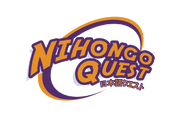Level: N5
Game Location: ハコダテ
Explanation:
The main point:
Counting from 1-10 in Japanese is relatively simple. The only thing to watch out for are 4 and 7, which have two pronunciations.
The longer explanation:
Here is how you count from 1-10.
| English | Kanji | Hiragana |
| One | 一 | いち |
| Two | ニ | に |
| Three | 三 | さん |
| Four | 四 | し or よん |
| Five | 五 | ご |
| Six | 六 | ろく |
| Seven | 七 | しち or なな |
| Eight | 八 | はち |
| Nine | 九 | きゅう |
| Ten | 十 | きゅう |
What's the difference between the two readings for 4 and 7?
Mostly, it just depends on preference. If you are just counting numbers normally, either one is okay. If a group of native Japanese people are counting together, half will say it one way and half will say it the other.
I have read online that some people avoid saying し due to it being pronounced the same as the word for death in Japanese. I have personally never met a Japanese person that agrees with that. However, し is considered to be an unlucky number because of that, so I don't think it's completely unfounded.
Formality:
Numbers are not changed by formality in Japanese.
Remember this:
When using numbers to count animals, objects, etc. you will need to use counters. This will be taught later.
